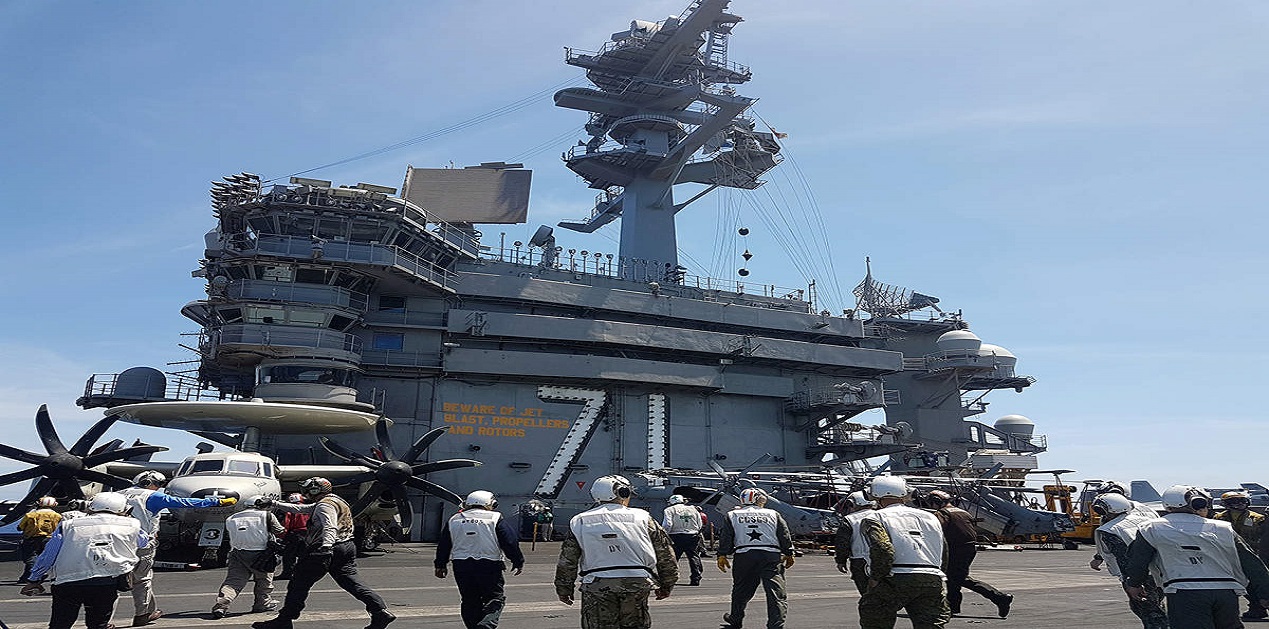While the world is preoccupied in grappling with the deadly Covid-19 virus unleashed from Wuhan, China un-abashedly marches on with its ominous policy of creeping occupation of South China Sea (SCS). The recent target of China’s expansionist policy is an exploration ship operated by Malaysian State enterprise Petronas in the Malaysian EEZ. A Chinese survey ship “Haiyang Dizhi 8” has been deployed very close to the Malaysian vessel staking the illegitimate Chinese claims.
In an interview to Al Jazeera last November the then Malaysian Foreign Minister Saifuddin reportedly said “For China to claim the whole of South China Sea belongs to China, I think that is ridiculous.” He further said that “it is a claim (over EEZ) that we have made, and we shall defend our claim.”
Both China and Malaysia have signed the UN Convention on the Law of the Seas (UNCLOS) which clarifies the rights and responsibilities of the member States’ use of the oceans. On 12 December 2019, Malaysia made a formal submission to the ‘Commission on the Limits of the Continental Shelf’ under Article 76 of UNCLOS seeking information on the limits of its continental shelf beyond 200 nautical miles. The consideration of this submission will be included in the provisional agenda of the 53rd session of the Commission to be held in New York from 6 July to 21 August 2021.
The interpretation of China’s rights in SCS by UNCLOS is at complete variance with the expansive claims of China. At a request of Philippines, the Permanent Court of Arbitration in The Hague had in 2016 held the Chinese claims to the entire SCS as unfounded. However, China had rejected this ruling and continued to enhance its presence in contested areas by building artificial islands, runways, ports and installing advanced missile systems. In the background of his strained relations with the US, Philippines President Rodrigo Duterte chose not to confront China and sacrificed Philippines territorial claims for an economic package from China. This was a practical manifestation of the assertion in 2010 of China’s then Foreign Minister Yang Jiechi to his ASEAN counterparts that “China is a big country; and other countries are small countries. And this is just a fact.”
China’s infamous 9-Dash line in the SCS is being questioned by several ASEAN members including Vietnam and Indonesia. Since 2002 ASEAN is working with China to work out a unified ‘Code of Conduct’ for all nations operating in the SCS. But China has been stalling and has successfully undermined the unity of ASEAN members. Under the weight of China’s largesse, Laos and Cambodia have been taking positions to safeguard Chinese interests. In ASEAN, all decisions are taken unanimously and even one member can cause an impasse.
China’s declared policy is to ‘settle’ all issues regarding SCS ‘bilaterally’ as it is the stronger party and in a position to bully individual ASEAN members if they are denied the strength inherent in collective negotiations. China’s stance has the bad odor of ‘unequal treaties’ of the 19th Century when the Western powers imposed their unfair terms on a weak Chinese Emperor. Unfortunately, China under President Xi Jinping is doing with its smaller neighbors exactly what the Western imperialists did to China back then.
Under the Presidency of Donald Trump, US has enhanced the frequency of the regular forays of US Navy in the SCS and its large ships often sail close to the artificial islands built by China drawing sharp Chinese criticism.
In November 2019, at a meeting of the ‘ASEAN Defence Ministers Plus’ in Manila, the Chinese Defence Minister Wei Fenghe cautioned the US Defence Secretary Mark Esper to “ stop flexing muscles in the South China Sea and to not provoke and escalate tensions in the SCS.” This was in response to US Defence Secretary’s public accusation that Beijing was “increasingly resorting to coercion and intimidation to advance its strategic objectives.”
In December 2019, US upped the ante when the Commander of the US Navy’s Pacific Fleet Admiral John Aquilino said that China’s activities in the territories it claims in the SCS are designed to intimidate other countries. Speaking in Bangkok, Admiral Aquilino said that the role of US was to “keep the nations and the region secure” in cooperation with its allies. He minced no words and observed that “there is no doubt that the US is in competition with the Peoples’ Republic of China.”
In this background, on 20 April two US warships USS America and USS Bunker Hill have sailed near the Chinese research ship ‘The Haiyang Dizhi 8’.
This development has made the Malaysians uneasy. On 23 April the Malaysian Foreign Minister called for calm and reaffirmed Malaysia’s commitment to peace in SCS. He, however, added that, “Malaysia remains firm in its commitment to safeguard its interests and rights in the SCS.” He also stated that his country had open and continuous communication with both China and the United States.
Malaysia stands firm on its claims but has prudently taken a cautious position to avoid any conflict with China declaring that “Our stance is that any disputes should be resolved amicably through peaceful means, diplomacy and mutual trust.” Now, it is for China to respond by withdrawing its survey ship.
Presence of US Navy in the SCS sends a powerful signal to China and strengthens the hands of all aggrieved parties whether Malaysia, Vietnam or Indonesia. This also signals to the entire East Asia that United States under President Donald Trump is ready to take a tough line against China to protect its own strategic interests and the economic interests of its friends in the region.
(The paper is the author’s individual scholastic articulation. The author certifies that the article/paper is original in content, unpublished and it has not been submitted for publication/web upload elsewhere, and that the facts and figures quoted are duly referenced, as needed, and are believed to be correct). (The paper does not necessarily represent the organisational stance... More >>
Image Source: https://economictimes.indiatimes.com/thumb/msid-75318886,width-1200,height-900,resizemode-4,imgsize-858638/south-china-sea.jpg?from=mdr











A very clear and cogent presentation of a prevailing situation in SCS where China has been muscle fencing for quite sometime. Pity of course is that ASEAN is unable to put up a unified stance despite a number of member states being confronted by an obdurate imperial power.
Post new comment